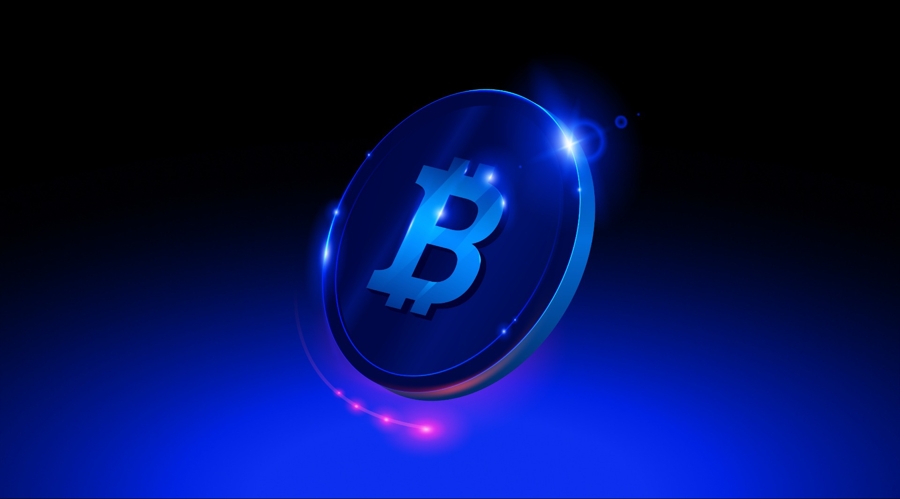The emergence of AMMs and liquidity mining empowered DeFi protocols to attract liquidity through decentralized incentives. This not only enabled the self-sustainability of DeFi apps but also fueled the DeFi Summer phenomenon. The flexibility and programmability of DeFi offered investors viable alternatives to CeFi, luring capital and users with higher yields and more investment options, ultimately driving the previous bull market.
However, after a brief boom, DeFi Summer soon faced challenges.
The dependence on incentive-based liquidity mining created an unsustainable environment. As the excitement and rewards of DeFi Summer waned, liquidity providers quickly withdrew their investments, triggering a liquidity crisis for numerous on-chain protocols. At the same time, top DeFi protocols such as Uniswap, Curve, Aave, MakerDAO, and Compound reaped significant benefits, securing a dominant share of the market's transaction volume and inadvertently creating a monopoly over DeFi liquidity.
The imbalance in DeFi market liquidity also shed light on the problem of low capital efficiency. Take AMM models like Uniswap v2, for instance; they provided liquidity for the entire price spectrum, yet most trading activity clustered around the market price, resulting in the underutilization of assets in liquidity pools.
Additionally, stakeholders including liquidity providers and traders grew frustrated with the diminishing returns from yield farming, compounded by the high slippage and losses due to the scant liquidity. In their quest for more stable returns, these participants increasingly gravitated towards prominent DeFi protocols or traditional centralized exchanges, further intensifying the concentration of market power and liquidity.
Delving into the New Era of DeFi 2.0
DeFi Summer revealed both the potential and the challenges of the sector, indicating a need for its evolution to support continued growth.
The concept of DeFi 2.0 started gaining traction in 2021. By improving liquidity, capital efficiency, scalability, governance, user experience and security while introducing more complex tokenomic designs, DeFi 2.0 facilitates more sustainable on-chain ecosystem growth.
Moving past the basic incentive-driven liquidity "rental" model, DeFi 2.0 addresses the challenges of sustaining liquidity and provides more robust incentive mechanisms to support the long-term viability of native token protocols. Through DeFi 2.0 frameworks, protocols can establish more synergies across multiple dimensions - between the protocol and users, and even between users. Liquidity providers can capture greater long-term value from protocols rather than extracting funds after short-term gains. Ultimately, the goal is to cultivate healthy, vibrant ecosystems where all participants are incentivized to contribute to and benefit from collective growth.
Olympus DAO emerged as a pioneering force in the DeFi 2.0 landscape.
Olympus DAO attempted to solve liquidity challenges through a novel bonding mechanism centered on protocol-owned liquidity (POL). Instead of liquidity mining rewards, OlympusDAO used bond sales - third party liquidity providers could exchange their LPs for Olympus DAO’s native OHM tokens at a discount. To prevent excessive sell pressure from quick arbitrage, bonded OHM underwent 5-7 day vesting schedules.
So rather than essentially renting external liquidity, Olympus DAO purchased liquidity directly through bonds. This eliminated withdrawal risks while accumulating persistent reserves and generating direct revenue for the protocol.
Olympus DAO implemented dynamic pricing mechanisms for its bonds, giving it control over token minting speed and amounts. For example, excessive bond sales prompted discounts to decrease or even turn into premiums, capping liquidity influxes. This tuned token emissions to maintain sustainability.
Relative to liquidity mining, POL realigned incentives for third-party liquidity providers and the on-chain protocol to more effectively minimize impermanent loss. This bond-based scheme locked in external liquidity, lowering slippage for traders while reducing barriers to ecosystem participation. At its peak, Olympus DAO reportedly controlled over 99.7% of OHM-DAI and OHM-FRAX liquidity, generating millions in daily DEX trading fees.
Alongside Olympus DAO, protocols like Tokemak and Alchemix were also DeFi 2.0 pioneers.
With the advent of more advanced Layer 1 protocols, coupled with the development of Eth 2.0 and Layer 2 solutions, on-chain protocols have achieved significantly higher scalability. Prominent players like Uniswap, Curve, and Aave have become foundational in this landscape, sharing their groundbreaking innovations and a wealth of resources, including liquidity. This robust infrastructure has greatly broadened the scope and potential of DeFi 2.0.
After veterans like Olympus DAO and Tokemak established early DeFi 2.0 contours, Vimverse is now pushing frontiers even further.
Vimverse embraces the Protocol-Owned Liquidity (POL) model of Olympus DAO, securing external liquidity through discounted bond sales. Differently, Vimverse integrates this with Uniswap v3 as its foundational layer, allowing for superior liquidity management and unparalleled capital efficiency – truly encapsulating the DeFi 2.0 ethos, a step beyond earlier protocols. At the core of Vimverse’s DeFi 2.0 ecosystem is the $VIM token, around which Vimverse is developing new use cases to draw in external value, thereby strengthening its ecosystem's foundation.
Vimverse’s New DeFi 2.0 Narrative
Vimverse has crafted a unique DeFi 2.0 system centered on the VIM token. Through a bonding mechanism, users can buy discounted protocol tokens (sVIM) using stablecoins and other tokens. Once purchased, sVIM enters a 10-day vesting period, securing liquidity in pools. Serving as an interest-bearing asset, sVIM provides returns based on yield and can be converted back to VIM at any point.
Mirroring Olympus DAO, every VIM in Vimverse is backed by at least 1 USDT. If prices drop below 1 USDT, the protocol buys back and burns VIM to uphold its value. If prices exceed 1 USDT, more VIM gets minted and sold to maintain stability. Increasing treasury funds introduce additional buyback mechanisms to further steady token value.
Notably, Vimverse profits whether VIM gets purchased or sold. This rebasing effect pushed Olympus DAO’s OHM to over 1300 USDT at its peak - Vimverse’s added innovations could propel VIM even higher through this new value accrual.
However, Olympus DAO's focus on boosting liquidity, using Uniswap V2, overlooks efficiency and trading fees optimization. This exposes Liquidity Providers to impermanent loss risks, potentially affecting both investors and the protocol.
Vimverse leverages Uniswap v3 to enable active liquidity management. In fact, Uniswap V3's concentrated liquidity feature enhances capital efficiency, allowing LPs to target specific price ranges for providing liquidity. Upon accumulating funds in its treasury from bond sales, Vimverse then leverages its bespoken Protocol Managed Market Making (PMMM) mechanism alongside Uniswap V3’s customizable liquidity features for refined management strategies. Skilled market making teams actively steward liquidity through strategies while optimizing yields, returning profits back to bondholders.
Compared to Uniswap v2 and centralized exchanges (CEXs), Uniswap v3 showcases greater capital efficiency, achieving more effective liquidity with less capital. It consistently delivers enhanced market depth across various price ranges, a fact validated by Paradigm's paper, "The Dominance of Uniswap v3 Liquidity." Additionally, Uniswap V3 is notably effective in reducing transaction slippage, particularly in narrower price ranges.
By integrating with Uniswap v3, PMMM inherits these advantages. Vimverse’s edge over protocols like Olympus DAO becomes clear. Intuitive price stabilization across targeted ranges, tempering volatility while elevating capital efficiency and trading fee income. With substantial and well-managed liquidity in place, Vimverse further minimizes trading slippage - culminating in an improved user experience.
For projects seeking liquidity, Vimverse's PMMM mechanism offers a more efficient liquidity model with lower capital needs, allowing for the reallocation of resources towards ecosystem and technology development.
According to Vimverse's revenue forecasts, the synergy of Olympus DAO and Uniswap v3 models is expected to yield over 115% annualized return rate (APR) from trading fees, a rate that is highly competitive in the DeFi landscape. Even solely through liquidity management, Vimverse demonstrates strong potential for revenue generation.
Vimverse is branching out beyond its role as a DeFi protocol, establishing itself as a launchpad and incubator for GameFi and other innovative projects. This expansion into new areas, supported by strong collaborations within its ecosystem, leads to greater revenue diversification.
As a result, VIM plays a vital role in Vimverse’s debt systems while also participating in GameFi projects to earn gaming assets and additional yield opportunities. VIM can be used to buy bonds from partner projects at reduced prices, enabling the Liquidity as a Service (LaaS)for ecosystem participants . The expansion of VIM's applications within the GameFi sphere enhances its necessity, further solidifying its value in the ecosystem.
To foster long-term user engagement and build consensus, Vimverse has rolled out a novel feature. Users can lock their sVIM to earn VIP (Vimverse Points), which are redeemable for GameFi tokens as well as exclusive benefits like NFT airdrops and minting discounts within the ecosystem.
Vimverse's revenue sources are diverse, originating not only from bond sales and market-making profits but also from GameFi NFT sales, token transaction fees, and more. These varied revenue streams bolster liquidity reserves and contribute to the stability of VIM. With the significant improvement in capital efficiency, revenue from VIM trading fees is poised to increase considerably, continually powering this positive cycle of value creation.
Vimverse exemplifies promising new paradigms for DeFi 2.0 and beyond - illuminating potential pathways for innovation across DeFi protocols.
DeFi’s Innovation Trajectory
As the DeFi sector evolves and expands its capabilities, leading protocols are utilizing their brand recognition to secure industry resources and spur technological advancements. A prime example is Uniswap, which, after the success of V3, has introduced V4 and Uniswap X, each with distinct features and improvements.
Composability is unlocking new avenues for DeFi innovation. Savvy developers are piecing together modular DeFi components with diverse functionalities to construct novel products, achieving vertical innovation through on-chain synergies. DeFi 2.0 follows this ethos, addressing persistent challenges in DeFi trading by focusing on interoperability and compatibility.
However, as DeFi experiences a series of breakthroughs, finding truly disruptive innovations is becoming more challenging. The space is encountering limitations in vertical development, leading to a slowdown in the evolution and advancement of DeFi applications.
Vimverse is offering a fresh approach to propel DeFi innovation forward. It goes beyond merely improving liquidity management for its new Liquidity-as-a-Service (LaaS) model. Vimverse effectively addresses the persistent trilemma of liquidity, efficiency, and yield that has been a challenge in DeFi. Additionally, its integration of GameFi into the horizontal plane empowers the ecosystem, enabling greater value capture and creating stronger defenses. This mix of vertical and horizontal innovations molds Vimverse into a more comprehensive and dynamic platform, capable of attracting and harnessing external value.
The integration of DeFi components to achieve groundbreaking innovations marked the beginning of a new DeFi 2.0 era. Further developing this with additional horizontal expansion could very well indicate the emergence of a DeFi 3.0 age, building upon the foundational advancements of its predecessor.
Moving forward, novel amalgamations fusing horizontal innovation and vertical improvements much like Vimverse could become the prevailing approach for pushing DeFi frontiers even further.















